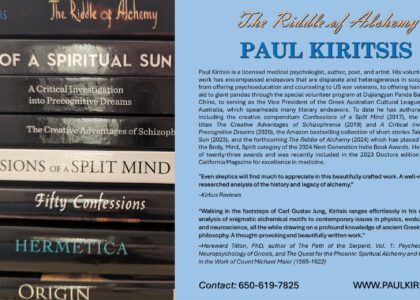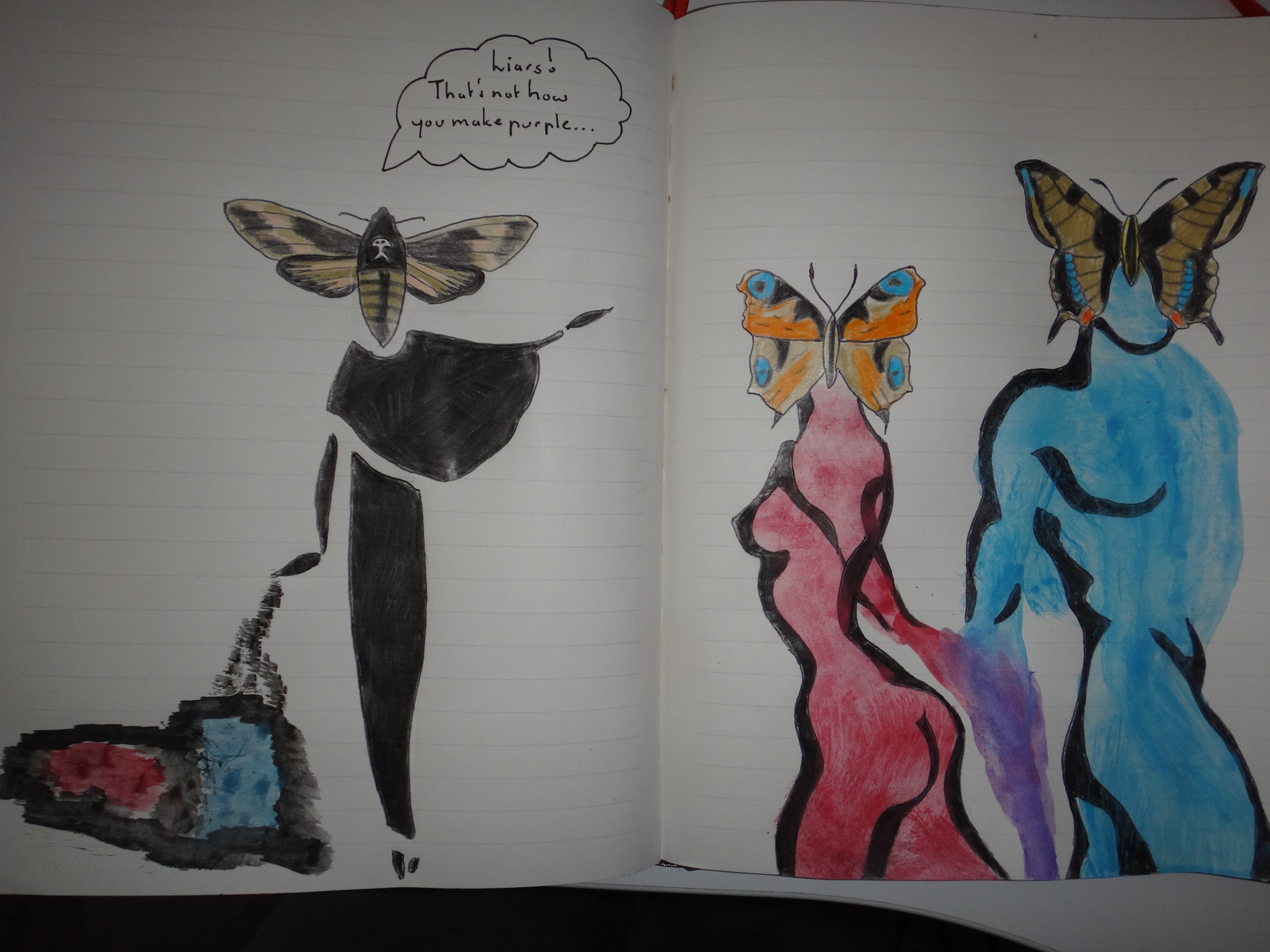
According to alchemical doctrine, the unremitting addition of mercury to the prima materia in the alembic or retort and the repeated cycles of distillation to which it is subjected spurs a violent reaction, causing it to attain a deep red hue that can be likened to blushing. Fiery red is a colour of rage, anger, passion, emotion and activity, as well as the unconscious will to dominate, subjugate and rule over nature. It is also the colour associated with the culminating phase of the alchemical opus, the rubedo, where the prima materia becomes ultima materia or the Philosopher’s Stone. The latter is habitually described as an elusive dense, red powder that scintillates in the daylight like shards of broken glass. So many miraculous feats are attributed to it, the most notable being the transmutation of base metals into gold and the conferral of immortality upon the individual who ingests it. Like earthly quicksilver, it was supposed to coagulate into a wax-like jelly when subjected to high temperatures and reacquire its original solid state again upon cooling. In describing this, the most desirable of alchemical stages, the seventeenth century alchemist Eirenaeus Philalethes (the peaceful lover of truth) posited that: ‘And so the Red they name their Vermilion, their red lead, their Poppy of the Rock, their Tyre (i.e. Tyrian Purple), their Basilisk, their red Lion, and in sum it borrows the names of all red things.’ Red flowers like roses and lilies, the ruby gemstone, and the red King are also symbols of the alchemical rubedo. The last of these is inexplicably linked with the sun, a material constituent of the collective and personal conscious. Hence the rubedo alludes to the exaltation of the conscious mind under the auspices of an integrated unconscious; what Carl Jung called individuation.
A cosmographical interpretation preceding the foundation of this concept subsists in The Book of Night, an ancient Egyptian text to be found in the second transverse chamber of the Osireion in the Upper Egyptian city of Abydos. In an illustrative sequence related to the twelfth hour of the night, the sun-boat travelers are creatively propelled forward from the sacred pudendum of the sky goddess, through the infernal regions of her bloodied birth canal. The act of coming through it involves further tribulations of resisting dissolution and death, but it also involves revivification with the vital life force, the subtle body that enables the physical body to operate on the earthbound, spatiotemporal plane. After their final purification, the night travelers can be born again anew onto the earth from amidst multicolored shades of dawn redness perceived to be the creative juices of the Nut goddess in her moment of giving birth to her divine child, the sun. Contained within the aurora are all the emotional irruptions, the warmth, heart, and splendid wonder that can only come with the realization that something of ourselves survives the corrosive forces of nocturnal death and emerges again distended or changed in some fundamental way. This is redness or reddening. One of the most fascinating aspects of the twelfth hour imagery is that it combines leitmotifs and titles of divinities that are both solar and lunar in nature, implying that culminating aspects of the everlasting cycle of cosmic birth and rebirth encompasses a unified sphere of positive and negative, the feminine and masculine reconciled. Given that the ancient Egyptians were masters of utilizing puns, allegories, verbal nuances, and other language techniques to express Hermetic processes of creation pregnant with multiple layers of meaning, it shouldn’t be all that difficult to comprehend how this concluding aspect of the Egyptian underworld journey corresponds with the reddening of psychological integration and the mechanics of self-actualization. In truth the more comprehensive, holistic, and overarching former embodies the reductionistic, dualistic, and “scientifically-justified” phenomenological approach of the latter.
Transpersonal psychology envisions the alchemical rubedo as the creation of a new, pneumatic state whereby any egoic projections of desirousness and personal exaltation emerging onto the virgin slate of the soul are instantly transformed into a creative fluid ready to utilize the client’s inner natural tendencies when forming interpersonal relationships. In this way psychic connections are not only genuine and open, but full of significance, resolve, and an adroit capacity for rejuvenation. Unlike many foregoing stages, the rubedo signals a permanent change to the composition of one’s personality; now, irreconcilable and hostile forces are resisted and the frightening putrefactio caused by internal friction more easily endured because of its constructive and beneficial aftereffects. Somebody who has reached this level of development through clinical work or the life process is fueled by spiritual love and fundamental harmony, operating in ways that deepen and enrich personal and collective experiences. They are concerned for their own welfare; the welfare of their brothers and sisters; and for the betterment of transnational ethos and lifestyle. Well-balanced, measured, and calculated in their thinking and consequent actions, integrated individuals emit positive, benevolent vibrations that radiate outwards and enrapture those in their immediate vicinity; their cheerful disposition is so infectious and soul-nourishing that others vibrating on lesser wavelengths want to be around them all the time. High vibrations are energizing and everyone wants to be energized.
Rubedo, then, might be described as a permanent psychospiritual shift within the client or individual involving the appearance of objectively-sensed truths. The most important of these relates to the nature of the relationship between the inner and outer planes, between microcosm and macrocosm or mind and matter. Integrated clients know that to pursue the fulfillment of though-desires orientated towards the acquisition of material properties is futile because the desirousness of the ego-self is perpetual and can never be completely gratified. How does one quench an unquenchable thirst? Having climbed onto the sturdier ground on which the ‘superior’ personality or ‘diamond body’ rests, he or she now understands that the ego’s desire to possess bits and pieces of the phenomenal world and call them ‘mine’ arises from a persistent concentration on exterior visual imagery, one that imbues their corresponding internal constituents with emotional significance and personal worth. When unaccompanied by mental processes able to internalize images and assimilate them into an intricate personal labyrinth of interconnected meanings and purposes, matter is meaningless and worthless. In other words there is no worth or value in anything unless matter is appropriated by the dualism of the human mind. Everything is within, not without. Logically then, relations and actions with the outer world–movements, possessions, behaviors and attitudes, and the scope and depth of active participation in interpersonal relationships–are all splinters of a mirror reflecting core worth or values that currently preside over the integrated or un-integrated soul of a particular individual.
If this esoterically-flavored philosophy is to be believed, then what we call reality and objective truth are in truth internal affairs; a subjectively-constructed situation of each person’s ‘heart’. Contemplating this truth, mulling it over, and then ‘earthing’ it by applying it to relationships and to life in general is what reddening or the rubedo is all about. Just like the ultima materia or ruby-red Philosopher’s Stone, fulfilling the spiritualization of consciousness in this psychotherapeutic stage is about being able to project oneself into foreign psychic spaces, withdraw from them at will, and rise to extraordinary places in the heavens from whence the action of the spiritual winds on the collective and personal psyche becomes fully coherent. It’s about programming the mind to be unconditional and non-judgmental, pulling down fixated and neurotic obstructions, and being about to infuse oneself into foreign modes of thought and being. The imaginal world is its inheritance and creative vision is its language. Its dialect is subtle. This is rubedo or red.
Are you seeing red yet?








